30 Years On, Undergraduate Scholarship Program Sows Scientific Excellence
Early Investment Nets Top Talent
BY MICHAEL TABASKO, THE NIH CATALYST

NIH has been investing in future scientists for 30 years through the Undergraduate Scholarship Program, which has yielded a multitude of biomedical breakthroughs at the NIH and beyond. Pictured, left to right, are former recipients Afua Asante-Otoo, Freddy Escorcia, Andrea Apolo, Sadhana Jackson, Yvette Pittman, and Luis Estrada.
Good financial advice says that investing early secures a fruitful financial future. The same could be said for bolstering the careers of aspiring young scientists.
The Undergraduate Scholarship Program (UGSP), authorized by Congress in 1994 to grant financial aid to undergraduate students from disadvantaged backgrounds committed to careers in biomedical, behavioral, and social science research, has yielded a multitude of biomedical breakthroughs at the NIH and beyond.
Consider technologies that improve brain tumor treatments, clinical trials that bring novel drugs to market, or tumor-seeking radioactive particles. These are but a few examples that have evolved from the work of UGSP “graduates.”
Each year, about 13 outstanding students are accepted to the program and receive up to $20,000 for undergraduate expenses. They can apply for up to four years of assistance, and for each year they receive the scholarship, they owe NIH two paid service obligations of 10 weeks in the summer and one full year of work either before or after their graduate studies. Many UGSP scholars had been community college students transferring to a four-year university, and several had to work other jobs to support themselves and sometimes their families.
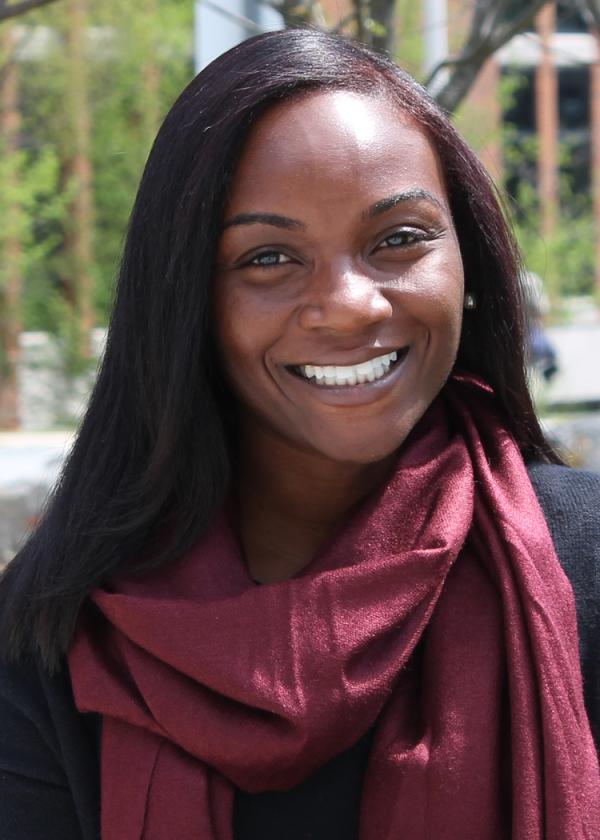
CREDIT: CHIA-CHI CHARLIE CHANG
Kizzmekia Corbett-Helaire
“We see that many don’t have to have that second job and can focus more on their academics,” said Darryl Murray, UGSP director since 2007. He added that many scholars arrive with tremendous potential, such as Kizzmekia Corbett-Helaire, a UGSP participant from 2005 to 2008 who returned to NIH in 2014 and was an instrumental part of the team that rapidly developed Moderna’s COVID-19 vaccine. “It’s a cross section of the nation. There are individuals from rural communities to urban environments, and you get a chance to watch that cohort grow as a group and watch each individual grow in their own respective way.”
Some of those UGSP scientists decide to stay; others accept research leadership positions at universities or companies. Read on for a sample of their achievements and commitment to mentoring, diversity, and effecting positive change in the scientific community.
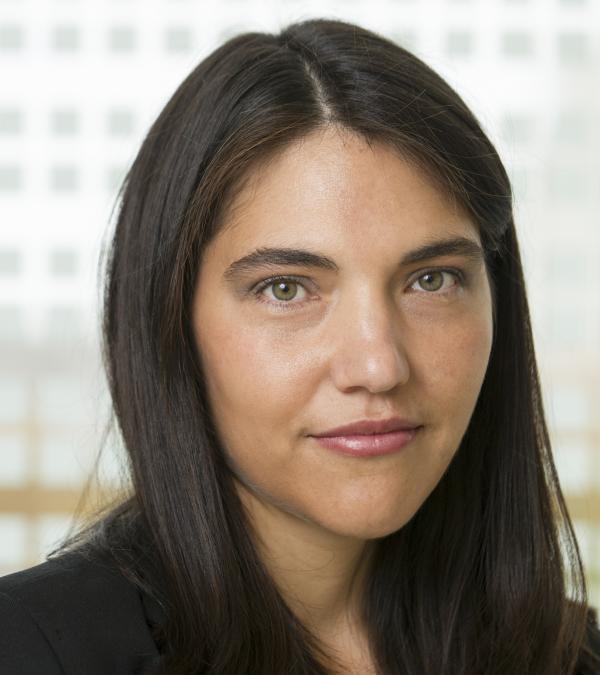
CREDIT: NCI
Andrea Apolo
Early star bolsters cancer portfolio
In 2010, the NCI’s first bladder cancer research program was built from the ground up by Andrea Apolo, senior investigator in the Genitourinary Malignancies Branch and among the UGSP’s first cohort in 1996. As an undergraduate student, she worked full time at restaurants while trying to keep up her GPA and get into medical school.
“I don’t think I could have continued doing that,” said Apolo, who went on to earn an M.D. at Albert Einstein College of Medicine (New York), completed an internal medicine residency at the Joan and Sanford I. Weill Medical College of Cornell University (New York) and a medical oncology fellowship at Memorial Sloan Kettering Cancer Center (New York), and returned to the NIH as a fully trained medical oncologist.
Apolo now leads a large team that runs more than a dozen active protocols. They were the first to do in-human studies demonstrating the efficacy of avelumab, now an FDA-approved drug for bladder cancer (PMID: 28375787). Another trial tested a kinase inhibitor combined with an immunotherapy to treat bladder cancer (PMID: 32915679), which led to further trials for multiple tumor types including kidney cancer (PMID: 33657295). This year, she presented promising results from the Ambassador study, a large clinical trial that tested an immunotherapy to reduce the risk of disease recurrence in patients with muscle-invasive urothelial carcinoma, a difficult to treat bladder cancer.
Apolo, recipient of the 2020 Arthur S. Flemming Award for her avelumab work, is paying it forward like many UGSP alumni by mentoring two UGSP scholars in her lab:
Ian Stukes, a postbac research fellow doing basic research and developing drug resistant models to study mechanisms of resistance toantibody-drug conjugates
Andre Kydd, a medical oncology fellow doing his UGSP payback in both basic research and clinical, working on helping develop clinical trials for rare bladder cancers
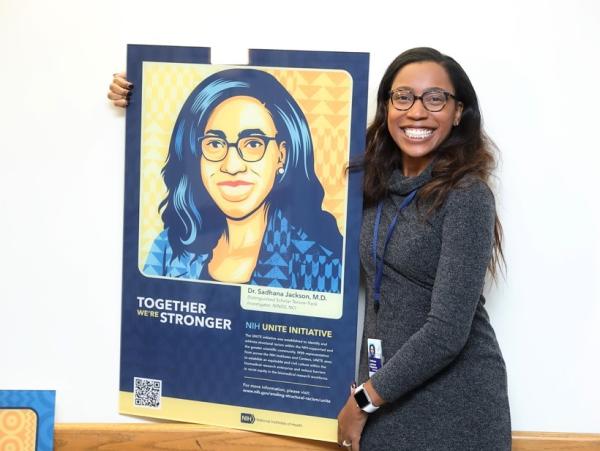
CREDIT: CHIA-CHI CHARLIE CHANG
Sadhana Jackson served as a co-chair of the NIH UNITE Initiative’s T committee. She also served as project lead for the UNITE Power of an Inclusive Workplace Recognition Project, which showcases diversifying art within NIH buildings and digital spaces. Pictured is Jackson proudly holding her own portrait before its installation in Building 10 on the Bethesda campus.
Breaking barriers
The delicate process of delivering drugs to brain tumors requires bypassing the blood–brain barrier (BBB), a highly selective membrane that tightly controls our central nervous system’s environment. “Our lab looks at those challenges and restrictions so we can be strategic about what therapies we select for these patients,” said Sadhana Jackson, a pediatric neuro-oncologist at NINDS’ Developmental Therapeutics and Pharmacology Unit with a joint appointment at NCI’s Pediatric Oncology Branch.
Jackson is conducting a clinical trial testing a technique called intratumoral microdialysis in patients with midline glioma, a particularly aggressive brain tumor affecting children and young adults (NCT: 05413304). The procedure monitors how much of an anticancer drug is getting to the tumor and is one way that Jackson’s team is intelligently selecting treatments that can cross the BBB and optimally impair tumor growth.
Her team also is studying ways to make the BBB temporarily permeable to improve drug delivery. Involved in that work was Melissa Cesaire, postbac fellow and UGSP scholar who joined Jackson’s NINDS lab and stayed an extra year before heading off to medical school this year. She left NIH a published author on a paper describing how an agent transiently opens and then closes the BBB in a mouse model of glioma (PMID: 38589905).
Recalling her own journey, Jackson hopes her mentees’ time at NIH is formative. “I tell them that the most important thing to deciding what and where you’ll be in the future is having a variety of exposures to many different experiences.”
Jackson, who was first exposed to NIH as a high school senior doing research through Howard Hughes Medical Institute’s program at NCI in 1998, also has a strong commitment to diversity and equity. She served as co-chair of the NIH UNITE Initiative’s T committee aimed at ending structural racism in biomedical research, and was recognized with several Director’s Awards for her work supporting that project. Perhaps most prestigious, she and her team received the 2023 HHS Mary Brodie-Henderson Call to Service Award for their dedication and leadership supporting NIH’s 8 Changes for Racial Equity (8CRE), where Jackson serves as communications lead.
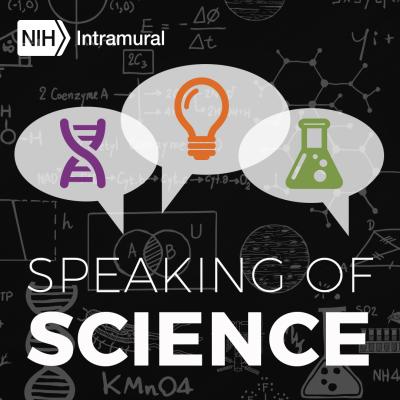
Listen to Sadhana Jackson speak about her research on this episode of the “Speaking of Science” Podcast.

CREDIT: NCI
Freddy Escorcia
Keeping good company
At NCI, cutting-edge bioengineering underway at Freddy Escorcia’s Laboratory of Molecular Radiotherapy involves developing molecules that are specific to hepatocellular carcinoma, a common liver cancer sensitive to radiation. They attach a radioisotope to those molecules that release emissions that can be picked up by positron emission tomography for tumor diagnosis, or they can switch isotopes to emit ionizing particles that cause DNA damage to specific cancer cells while sparing healthy ones (PMID: 36997331).
But as an undergrad, Escorcia admits his path wasn’t so well defined. During his first UGSP summer at NIH in 2002, he worked in Susan Gottesman’s lab and distinctly recalls the difference that networking with new colleagues made. He remembers being surrounded by peers who had been accepted to the ranks of high-profile medical schools such as Harvard Medical School (Boston) or the Columbia University Roy and Diana Vagelos College of Physicians and Surgeons (New York). “They were telling me I was competitive. It gave me a bit of a confidence boost, and I would have not applied otherwise, to be honest.” Escorcia left Gottesman’s lab that summer with their work immortalized in a high-impact paper (PMID: 12975324) and would go on to earn his M.D.-Ph.D. at the Joan and Sanford I. Weill Medical College of Cornell University, Memorial Sloan Kettering Cancer Center, and Rockefeller University (New York).

CREDIT: NIH UGSP
Freddy Escorcia working in the lab of Susan Gottesman in the summer of 2002.
He would return to NIH in 2017 as an assistant clinical investigator and became a Lasker Clinical Research Scholar in 2021. Escorcia is equally committed to making scientific careers accessible to the next generation. He received NCI’s Outstanding Mentor award and served on the American Society for Radiation Oncology’s Health Equity, Diversity, and Inclusion Council.
Escorcia is currently hosting an NIH Oxford-Cambridge Scholar who is the first author on an upcoming study that improves upon their innovative imaging technique. “The images we’re producing now are much better, and we’ve patented that method and hope to move it into clinical trials,” he said.
A clinical calling
Other UGSP grads find their passion in multidisciplinary pursuits away from the bench. At the CC, inpatients receiving treatment or enrolling in a protocol often rely on the team of Afua Asante-Otoo, staff physiatrist at the Rehabilitation Medicine Department, to maintain physical function and ease the transition back home. “The most rewarding part is helping patients who have limited access to medical care outside of here,” she said, recalling a pediatric patient from the Middle East. “Physical therapy, occupational therapy, and I collaborated to educate the parents and provide recommendations for a walker and other equipment for the patient to walk safely.”
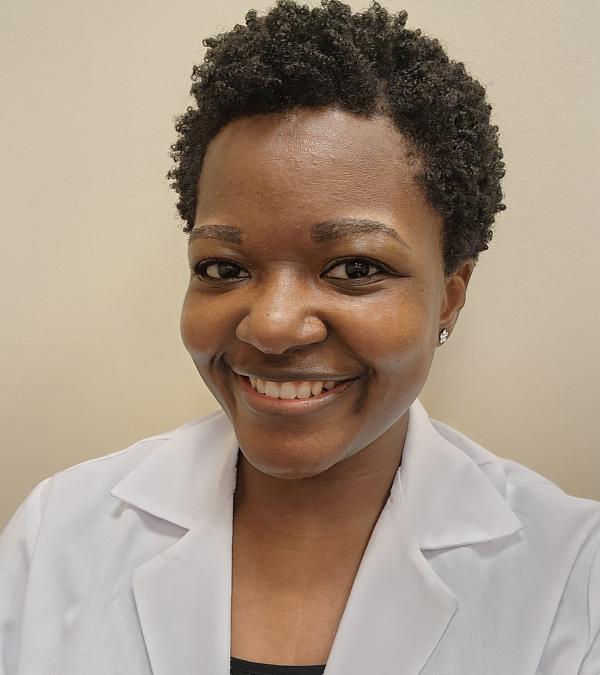
CREDIT: CC
Afua Asante-Otoo
During her first two UGSP summers, Asante-Otoo delved into basic bench research at NCI. After her first year at Wayne State University School of Medicine (Detroit), she returned for another summer investigating neurorehab at NINDS. “Having NIH on my resume boosted my applications. It came up as a talking point in almost every interview,” she said, adding that the motivation to apply to the UGSP came from an email sent by her uncle, a biochemistry professor. “The application was so long, but I didn’t want to disappoint him! It ended up changing my whole life and trajectory of my career.”
Asante-Otoo’s work is now 85% clinical, and along with being involved in research on neurologic disorders affecting gait and function, she looks forward to seeing an expansion of protocols helping pediatric patients. “I am excited and hoping to get enough pediatric equipment so we can help keep these kids moving during their long hospital stay. If we can treat them earlier, we’ll see [fewer sequelae] later.”
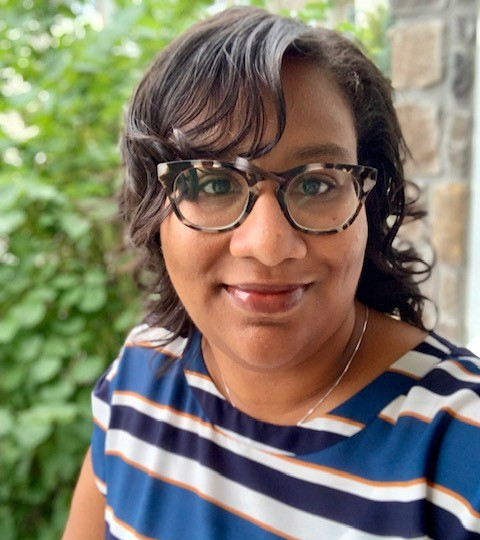
CREDIT: NICHD
Yvette Pittman
Crafting careers
Yet other UGSP alumni find their calling in shaping broader policy, such as Baltimore native Yvette Pittman, deputy director of the Division of Population Health Research at NICHD and the first person in her immediate family to graduate from college.
“My eyes [were] opened [by] the UGSP summer program,” said Pittman. “I remember learning so much about biomedical research along with an emphasis being on professional development, and those activities stuck with me. Skills like public speaking are so important as a scientist, and how to present your research. A good scientist is not just about doing science, and they were focused on us being well rounded, developing various skills needed for us to thrive in our careers.”
Pittman earned her Ph.D. in molecular genetics and microbiology at Rutgers University (New Brunswick, New Jersey) and came back to NIH as a postdoctoral fellow. She eventually gravitated towards administration, first at NICHD’s Office of Education and later at NINDS, where she served as director of the Office of Research Training and Career Development. In those roles she was able to broaden her reach in training the next generation of scientists while increasing exposure to underrepresented groups.
“I was able to touch so many lives,” she said. “My commitment to African American women in science has always been one of my guiding lights, and most of the people that I have had the privilege to mentor are those with similar stories to mine as a young scientist,” she added, recalling a physics major whom she helped with medical school applications and who ultimately earned a full ride to Cornell.
Pittman has a newfound interest in mentoring tenure-track investigators and emphasizes the importance of effective administration supporting good science. “I think that strong mentoring needs to happen not only for trainees but also as people rise through administration at NIH, particularly in midlevel careers and those who have left the bench to pursue an alternative career in the sciences. That work is so valuable, you can’t do one without the other.”
A collective story
As each generation of UGSP scholars builds upon the last, they contribute to a collective story. “We’re not only enriching the scientific community, we’re building the citizenry,” said Murray of the program’s alumni, who include intellectual property attorneys, university professors, biotech industry researchers, and DEIA leaders.
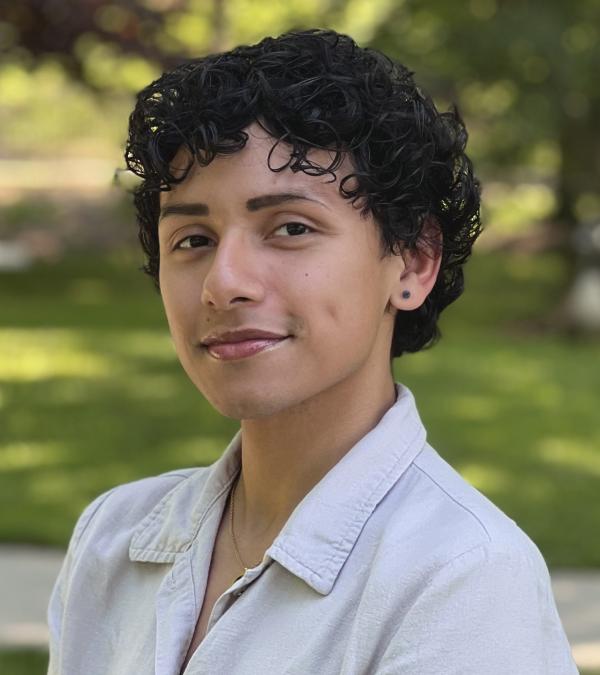
CREDIT: LIZZIE LONGTINE
Luis Estrada
One more UGSP scholar is Luis Estrada, who began their journey in NIH’s High School Scientific Training and Enrichment Program in 2017. They have just fulfilled their NIH obligations and are off this fall to the Icahn School of Medicine at Mount Sinai (New York) to pursue a Ph.D. in microbiology.
Estrada spent the past two years in Daniel Douek’s Human Immunology Section in the Vaccine Research Center studying the humoral response to viruses from Zika to SARS-CoV-2. Douek’s team pioneered a technique called rapid assembly transfection and production of immunoglobulins that speeds up the process of sequencing and identifying the antibody and B-cell response to infections (PMID: 36517467), and hope to unravel immune system dynamics and find potential targets for therapeutics and vaccines.
Estrada intends to pursue their passion for immunology, perhaps in academia. “I’m very grateful for all of my experiences at the NIH, which gave me not only a scientific foundation but a great perspective of who I want to become as a professional and a leader.”
And so, the circle remains unbroken.
UGSP By the Numbers
- 365 UGSP scholars were accepted to the program from 1996 to 2023.
- They represent 43 states, 3 U.S. territories, and Washington, D.C.
- From 2013 to 2023, scholars were 3.5% American Indian/Alaska Native, 16% Asian/Pacific Islander, 27% Black, 18% Hispanic, 28% white, and 6% multiracial.
- From 2013 to 2023, scholars were 51.4% female, 41% male, and 7.6% unknown.
- 80% are first-generation college students.
- 100% graduated from their undergraduate institutions.
- 72% earned a graduate degree.
- 54 graduate or professional degrees are currently in progress.
- From 1998 to 2023, degrees earned include 72 M.D., 65 Ph.D., 33 M.D./Ph.D., 5 Pharm.D., O.D., N.D., or J.D., and 47 Master’s degrees.
- 42 UGSP scholars are currently at NIH.
The UGSP is housed in the Office of Intramural Training and Education, which supports all NIH trainees and fellows with essential professional development opportunities and wellness resources during their time at NIH. For questions, email UGSP@nih.gov. UGSP staff include Moraima Matus-Nicodemos, director of student services; Jean Battle, program assistant; and Alia Alhomsi, who is currently completing her UGSP payback in the Office of Intramural Training and Education.
This page was last updated on Saturday, January 18, 2025
